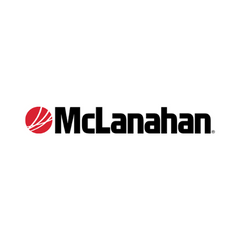At Edgewood Dairy in Custer, Wisconsin, the herd averages a daily milk production of 92 pounds per cow. Just 10 years ago, their average was in the low-80-pound range.
They attribute much of their year-over-year improvement in production to their emphasis on improving their herd by focusing on dairy genetics.
The 730-cow Edgewood Dairy is operated by LaVerne and Cindy Lepak; their daughter, Tracy Omernik; and their son, Joe Lepak. Another daughter, Crystal Kunst, helps out when needed.
As the herd manager, Tracy Omernik oversees their registered Holstein breeding program. They breed with two goals in mind: milk production and longevity.
“I focus on milk components to get the best results out of the cows,” Omernik says. “Milk production is number one. We push our cows. We’re always looking for more milk. And we get paid well for our milk. It goes into cheese: Our butterfat is 4.1 percent.” (According to the USDA, the average butterfat for Holsteins is 3.65%.)
The next criteria centers on longevity and health traits, important components of an animal’s lifetime profitability. “We want a cow that’s going to last. She’s got to have good feet and legs, and good udders for us to push these cows,” says Omernik. “We do not have robots, so it’s easier for the employee to dip and put the unit on if there’s good udder attachment.”
There are several evaluation tools for interpreting dairy genetics. Omernik uses Genomic Trait Predictability Index (GTPI) to make informed breeding decisions. This index uses traits in several categories to provide a ranking of Holsteins based on genetic merit. A GTPI signifies that genomic information was used in the calculation of the individual animal’s predicted transmitting ability (PTA) and overall index.
Another breeding strategy to increase the farm’s profitability is aimed at producing the most valuable calves. Edgewood Dairy invests in sexed semen. They breed all using A.I. and market embryos from cattle with high genomics.
“We invest a lot of money into the semen,” Omernik says. “The Net Merit of the dam and the sire combined doubles, if not triples, the youngstock when she calves. When we are breeding cattle, we try to get the sires with the highest GTPI at our dairy because it’s worth it. We do genomic testing to make sure the best animals are getting the best genetics. If we do market a couple of embryos here and there, you want to have the highest GTPI to sell them to Japan or Germany or whoever is interested in the actual bloodlines that you have.”
“We do some crossbreeding,” Omernik continues. “Our top-end cows are bred to high-end genomic bulls. They get mated every four months. And then the lower-end cows, as far as their genomics or their family tree, get bred with Angus. We do this because when selling the bull calves, we get double the money selling a black Angus instead of a Holstein.”
Omernik is a firm believer in the investment they have made by breeding based on genomics. They see the results.
“The milk production in the records is right in front of you,” she says. “One thing we’ve also noted is that our cows are lasting longer. We have old cows, and it all comes down to their health, their feet and legs, their udders. They are milk wagons. Our records show it. I’m trying to push 100 pounds per cow. We’re not quite there yet, so I’ll give it a couple more years.
“Whoever invented genomics really fine-tuned the dairy business. It’s a data-driven method that makes it easier for farmers to know the route to take to improve their herd. It’s amazing how our cows produce. I think it’s all due to the genomics. This is precision ag in the dairy barn.”
The family’s efforts have earned Edgewood Dairy a 2017 Achievement Award from the Wisconsin Department of Agriculture, Trade and Consumerism for outstanding milk quality. They’ve also won Holstein USA’s Progressive Genetics Herd Award every year since 2015.





